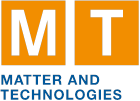Speaker
Mr
Marc Oliver Herdrich
(Helmholtz Institute Jena)
Description
The development of two-dimensional arrays of metallic magnetic calorimeters (MMCs) like the maXs-series detectors made a new generation of x-ray detectors available for spectroscopy experiments on highly charged heavy ions. MMCs are energy dispersive detectors operated at temperatures below 50 mK, which use a paramagnetic temperature sensor to convert the rise in temperature upon the absorption of a single x-ray photon into a change of magnetic flux in a SQUID sensor. They offer both a high energy resolution (ΔE/E≈0.001) and a broad energy acceptance range (100 eV up to 100 keV) at the same time, which makes them especially useful for experiments that involve several different interaction processes. Besides storage rings like the ESR of the GSI or the newly implemented CRYRING at FAIR, electron beam ion traps (EBITs) are particularly well suited for spectroscopic studies of heavy atomic systems. EBITs collide an intense electron beam with atomic targets to produce ions of different charge state through impact ionization. The ions are subsequently trapped within a specially designed electro-magnetic field where they continuously interact with the electron beam in form of further ionization, excitation, and electron capture. The latter two emit characteristic x-rays which can be observed by an appropriate detector. In an ongoing experiment at the GSI, for the first time, a maXs-30 MMC is used to record the characteristic x-ray radiation produced in the S-EBIT. First results and a detailed analysis of the experiment will be presented within the frame of this work. Insights from this experiment could be particularly useful for the planning of the proposed lamb-shift measurement using an MMC at CRYRING in fall 2019.
Author
Mr
Marc Oliver Herdrich
(Helmholtz Institute Jena)
Co-authors
Dr
Andreas Fleischmann
(Kirchhoff-Institute for Physics)
Prof.
Christian Enss
(Kirchhoff-Institute for Physics)
Mr
Daniel Hengstler
(Kirchhoff-Institute for Physics)
Dr
Sergiy Trotsenko
(GSI)
Mr
Steffen Allgeier
(Kirchhoff-Institute for Physics)
Prof.
Thomas Stöhlker
(GSI)
Mr
Tino Morgenroth
(GSI)

